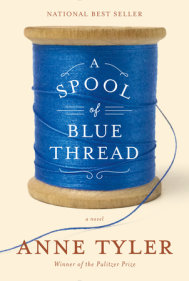 Sometimes you feel like a romance, sometimes you don’t. If you’re looking for a light period piece, At the Water’s Edge should give you a few hours of pleasure. If you love Downton Abbey primarily for its setting and romantic entanglements, this may be the book for you. If, however, you prefer highly developed characters and a complex plot alongside your highlands, scullery maids, and love triangles, At the Water’s Edge won’t be your cup of Earl Gray.
Sometimes you feel like a romance, sometimes you don’t. If you’re looking for a light period piece, At the Water’s Edge should give you a few hours of pleasure. If you love Downton Abbey primarily for its setting and romantic entanglements, this may be the book for you. If, however, you prefer highly developed characters and a complex plot alongside your highlands, scullery maids, and love triangles, At the Water’s Edge won’t be your cup of Earl Gray.
It’s hard to conceive that the same writer who wrote Water for Elephants also penned At the Water’s Edge. The word water seems to be their only similarity. At the Water’s Edge is a frothy World War II romance featuring a gruff war hero, caricatured hardworking Scots, and two American wastrels hiding from their lack of gumption and honesty while accompanied by a naive American girl in Scotland in search of the Loch Ness Monster.
Maddie and Ellis are newlywed American socialites. Maddie travels with Ellis and his best friend Hank to Scotland where they hope to redeem themselves and their fortunes. After a harrowing, wartime sea journey, they arrive in the tiny town of Drumnadrochit in January, 1945, so Ellis and Hank can search for the monster that Ellis’s father had once chased. Upon arriving, Maddie opines:
“To say that I wished I wasn’t there would be a ludicrous understatement, but I’d only ever had the illusion of choice. We have to do this, Hank had said. It’s for Ellis.
To refuse would have been tantamount to betrayal, an act of calculated cruelty. And so, because of my husband’s war with his father and their insane obsession with a mythical monster, we’d crossed the Atlantic at the very same time a real madman, a real monster, was attempting to take over the world for his own reasons of ego and pride.”
Thus begins Gruen’s quest to show that the sins of selfishness and arrogance don't just belong to classical madmen like Hitler. Meanwhile Maddie makes friends among the villagers, abandons her own pride, and learns that everything isn’t as she’d believed. Gruen pens word pictures like that of Maddie watching Ellis lecture her:
“I stared in fascination, watching his tongue undulate behind his teeth. Once, a string of saliva attached itself to his lips and survived the length of a few words before snapping. His nostrils flared beneath his pinched bridge. Deep lines appeared above his eyes, and when he tilted his chin so he could look down his nose at me, I could have sworn I was looking at his mother’s head spliced onto his body, a living, breathing cockentrice that had climbed off its platter and spat the apple out of its mouth so it could yammer at me about how surely even I could see that blurred boundaries not only encouraged the lower classes to be lazy, but threatened the very social structures our lives were built upon.”
Gruen’s language is carefully constructed yet it doesn't seem supported by the predictable storyline and the one-dimensional characters whose actions rarely surprise. Still, if you're looking for a Mother's Day or birthday gift for your mother, aunt, sister, or friend and she loves historical romances with a touch of sex and a guaranteed happy ending, At the Water's Edge will make her day.
Summing it Up: If I were on a long flight to Scotland, this might help me pass the time while filling me with visions of crofts, air raids, love scenes, and happy endings. If, however, you’re looking for historical fiction with more heft, this isn’t it. Just as the tea Maddie sips tastes like boiled twigs, this novel reads like a watered-down version of life during wartime.
Rating: 2 stars
Category: Chinese Carryout, Fiction, Historical Fiction (Pigeon Pie)
Publication date: March 31, 2015
Author Website: http://saragruen.com/author/books/at-the-waters-edge/
Interview with the Author: http://www.publishersweekly.com/pw/by-topic/authors/interviews/article/65573-from-water-for-elephants-to-the-water-s-edge-pw-talks-with-sara-gruen.html
Reading Group Guide: http://saragruen.com/author/books/at-the-waters-edge/guide/
What Others are Saying:
Kirkus Reviews: https://www.kirkusreviews.com/book-reviews/sara-gruen/at-the-waters-edge-gruen/
USA Today: http://www.usatoday.com/story/life/books/2015/03/28/the-waters-edge-sarah-gruen-book-review/25050021/
USA Today: http://www.usatoday.com/story/life/books/2015/03/28/the-waters-edge-sarah-gruen-book-review/25050021/




